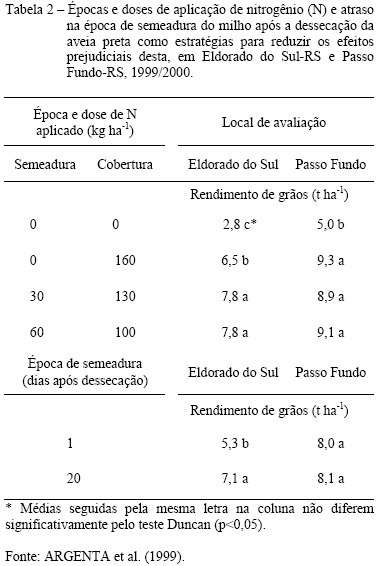The no-tillage system is adopted by most of the farmers in Rio Grande do Sul, Southern Brazil. No-till system requires no ploughing and only a narrow and superficial band or slot is opened in the soil to allow sowing. The sustainability of this system is dependent on a diversified system of crop rotation and succession able to leave on the soil an adequate amount of crop residues. In Rio Grande do Sul black oat (Avena strigosa L.) is the most cultivated cover crop, in spite of fact that different cover crops are available to precede the maize crop. Both maize and black oat belong to the Poaceae family and the continuous use of black oat may bring some losses to maize in succession. Therefore, other winter cover crop species, belonging to other taxonomic families, such legumes and crucifers, have been studied as alternatives to the no-till system which includes maize as a cash crop in the summer. The objectives of this review are: i) to describe the main advantages and limitations of winter cover crops, cultivated in pure stands or mixtures and ii) to discuss cover crops management strategies that most benefit the maize crop in succession.
Zea mays; Avena strigosa; Vicia sativa; Raphanus sativus; no-till; intercropped systems; grain yield; nitrogen fertilization



